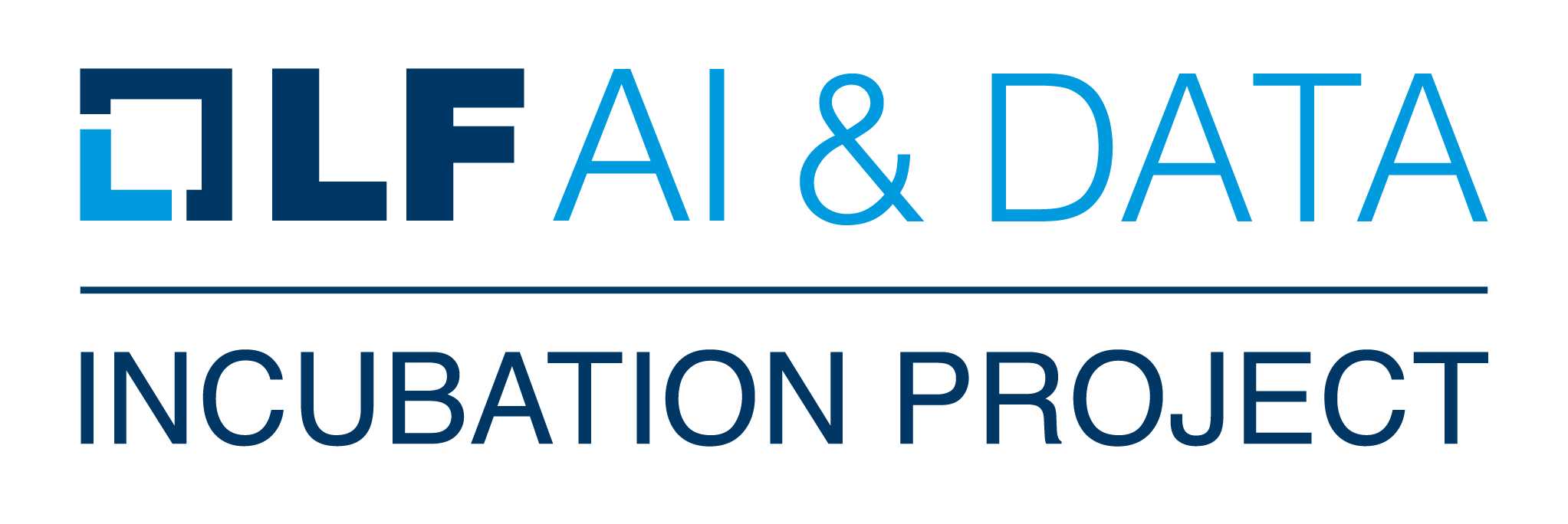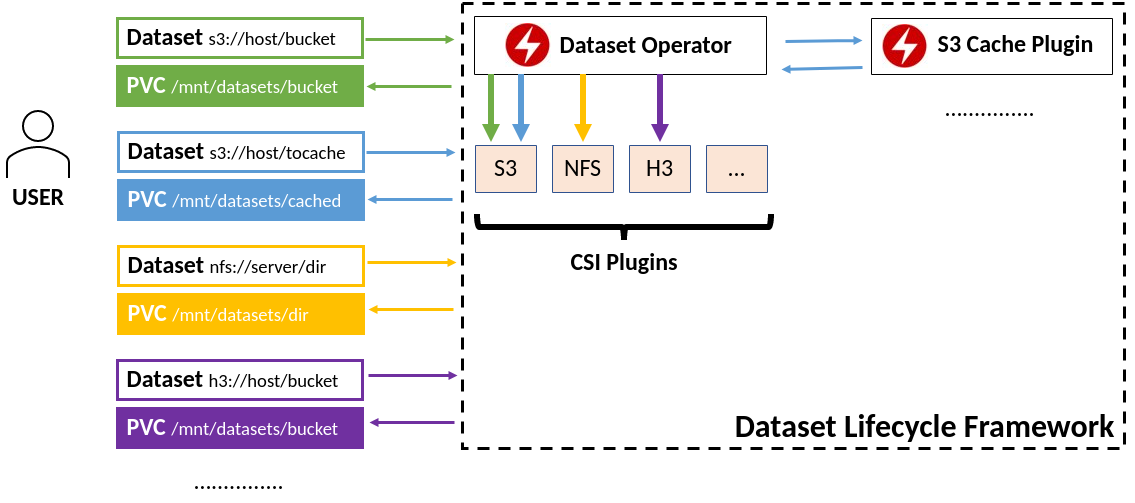Our Framework introduces the Dataset CRD which is a pointer to existing S3 and NFS data sources. It includes the necessary logic to map these Datasets into Persistent Volume Claims and ConfigMaps which users can reference in their pods, letting them focus on the workload development and not on configuring/mounting/tuning the data access. Thanks to Container Storage Interface it is extensible to support additional data sources in the future.
A Kubernetes Framework to provide easy access to S3 and NFS Datasets within pods. Orchestrates the provisioning of Persistent Volume Claims and ConfigMaps needed for each Dataset. Find more details in our FAQ
First, create the namespace for installing Datashim, if not present
kubectl create ns dlfIn order to quickly deploy Datashim, based on your environment execute one of the following commands:
- Kubernetes/Minikube/kind
kubectl apply -f https://raw.githubusercontent.com/datashim-io/datashim/master/release-tools/manifests/dlf.yaml- Kubernetes on IBM Cloud
kubectl apply -f https://raw.githubusercontent.com/datashim-io/datashim/master/release-tools/manifests/dlf-ibm-k8s.yaml- Openshift
kubectl apply -f https://raw.githubusercontent.com/datashim-io/datashim/master/release-tools/manifests/dlf-oc.yaml- Openshift on IBM Cloud
kubectl apply -f https://raw.githubusercontent.com/datashim-io/datashim/master/release-tools/manifests/dlf-ibm-oc.yamlWait for all the pods to be ready :)
kubectl wait --for=condition=ready pods -l app.kubernetes.io/name=dlf -n dlfAs an optional step, label the namespace(or namespaces) you want in order have the pods labelling functionality (see below).
kubectl label namespace default monitor-pods-datasets=enabledIn case don't have an existing S3 Bucket follow our wiki to deploy an Object Store and populate it with data.
We will create now a Dataset named example-dataset pointing to your S3 bucket.
cat <<EOF | kubectl apply -f -
apiVersion: com.ie.ibm.hpsys/v1alpha1
kind: Dataset
metadata:
name: example-dataset
spec:
local:
type: "COS"
accessKeyID: "{AWS_ACCESS_KEY_ID}"
secretAccessKey: "{AWS_SECRET_ACCESS_KEY}"
endpoint: "{S3_SERVICE_URL}"
bucket: "{BUCKET_NAME}"
readonly: "true" #OPTIONAL, default is false
region: "" #OPTIONAL
EOFIf everything worked okay, you should see a PVC and a ConfigMap named example-dataset which you can mount in your pods.
As an easier way to use the Dataset in your pod, you can instead label the pod as follows:
apiVersion: v1
kind: Pod
metadata:
name: nginx
labels:
dataset.0.id: "example-dataset"
dataset.0.useas: "mount"
spec:
containers:
- name: nginx
image: nginxAs a convention the Dataset will be mounted in /mnt/datasets/example-dataset. If instead you wish to pass the connection
details as environment variables, change the useas line to dataset.0.useas: "configmap"
Note: We recommend using secrets to pass your S3/Object Storage Service credentials to Datashim, as shown in this example.
Feel free to explore our other examples
Starting with 0.4.0-alpha.1, hosted Helm charts have been made available for installing Datashim. This is how you can do a Helm install:
helm repo add datashim https://datashim-io.github.io/datashim/helm repo updateThis should produce an output of ...Successfully got an update from the "datashim" chart repository in addition to the other Helm repositories you may have.
To install, you need to pass --devel flag for now as we do not have a full release available for Helm yet
helm search repo datashim --develPass the option to create namespace, if you are installing Datashim for the first time:
helm install --namespace=dlf --create-namespace datashim datashim/datashim-charts --develDo not forget to label the target namespace to support pod labels, as shown in the previous section
To uninstall, use helm uninstall like so:
helm uninstall -n dlf datashimThe wiki and Frequently Asked Questions documents are a bit out of date. We recommend browsing the issues for previously answered questions. Please open an issue if you are not able to find the answers to your questions, or if you have discovered a bug.
We welcome all contributions to Datashim. Please read this document for setting up a Git workflow for contributing to Datashim. This project uses DCO (Developer Certificate of Origin) to certify code ownership and contribution rights.
If you use VSCode, then we have recommendations for setting it up for development.
If you have an idea for a feature request, please open an issue. Let us know in the issue description the problem or the pain point, and how the proposed feature would help solve it. If you are looking to contribute but you don't know where to start, we recommend looking at the open issues first. Thanks!

